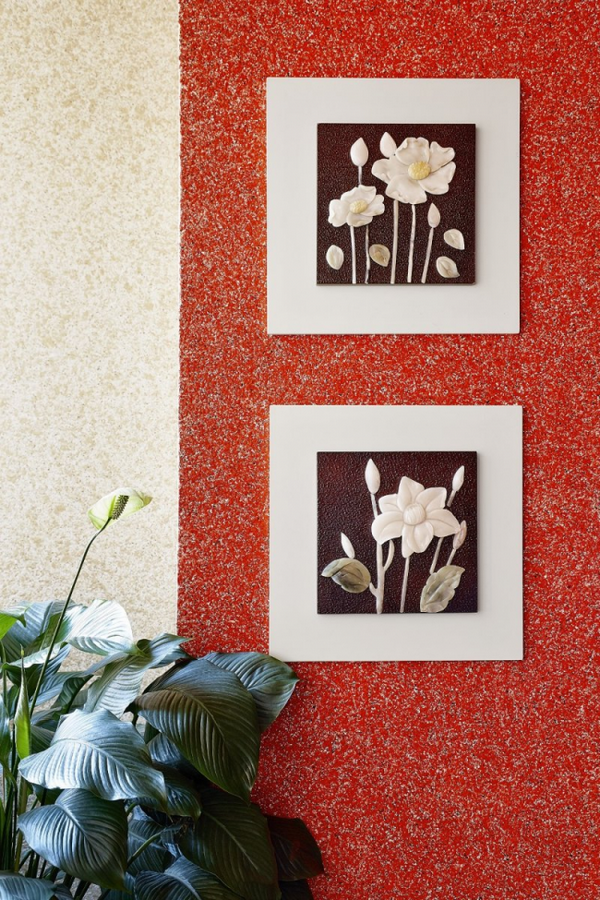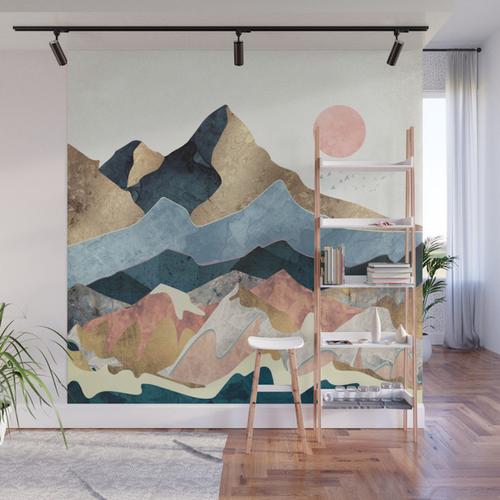Accent wall designs with paint are an excellent way to add personality, visual interest, and depth to your home decor. Whether you want to create a focal point or showcase a particular area, accent walls offer endless possibilities for creativity and style. In this comprehensive guide, we will explore different techniques and ideas for accent wall designs using paint. From choosing the right color and finish to incorporating patterns, textures, and geometric shapes, discover how to transform any room into a stunning and unique space that reflects your personal style and taste.

Choosing the Right Color: Setting the Mood
The first step in creating a painted accent wall is selecting the right color. Consider the mood you want to create in the room. Warm colors like red, orange, and yellow can evoke energy and excitement, while cool colors like blue, green, and purple can create a calming and relaxing atmosphere. Neutrals like gray, beige, or cream can provide a sophisticated and timeless look. Additionally, think about the existing color scheme and furniture in the room to ensure harmony and cohesion. Test easy wall paint samples on the wall to see how the color looks under different lighting conditions before making a final decision.
Applying Different Paint Finishes: Adding Texture and Depth
Beyond color, paint finishes can enhance the impact of an accent wall. Consider using different paint finishes to add texture and depth to the wall. For example, a matte finish offers a smooth and velvety appearance, while a satin finish provides a subtle sheen. A glossy finish adds more shine and reflects light, creating a dramatic effect. You can also experiment with metallic paints for a glamorous and modern touch. Combining multiple finishes in the same color can create interesting patterns and visual effects. Choose the finish that best suits your style and complements the room’s overall design.

Creating Patterns and Shapes: Adding Visual Interest
Painted accent walls can go beyond a solid color by incorporating patterns and shapes. Consider using painter’s tape to create geometric patterns, such as chevron, stripes, or herringbone designs. You can also use stencils to add intricate patterns like damask or Moroccan-inspired motifs. Another option is to use a sponge or rag to create a textured effect by stippling or dabbing the paint on the wall. Alternatively, try a color-blocking technique by painting different sections of the wall in complementary or contrasting colors. The key is to experiment and be bold, adding visual interest and unique character to your accent wall.
Accentuating Architectural Features: Highlighting the Room’s Assets
Painted accent walls can be used to highlight and enhance architectural features in a room. For example, if you have a fireplace or a built-in bookshelf, painting the wall behind it in a contrasting color can draw attention to the focal point and make it stand out. Similarly, accentuating the wall around windows or doors with a different color can create a frame-like effect. Be mindful of the room’s layout and architectural elements, using wall paint to accentuate and highlight the assets of the space. This technique can transform a room and make it more visually appealing.

Incorporating Wall Art: Integrate Painted Designs with Artwork
To add an extra layer of creativity and personalization, consider integrating painted accent walls with wall art. This can be achieved by incorporating a painted design as a backdrop for artwork. For example, you can paint a large-scale floral pattern and hang a complementary piece of art on it. Alternatively, create a gallery wall featuring various artworks against a solid painted accent wall. The painted design can act as a cohesive element that ties the artwork together. Combining paint and art can create a unique and dynamic visual experience in any room, adding layers of interest and self-expression.
Accent wall designs with paint Decoration precautions
When embarking on accent wall designs with paint, it’s important to consider various factors to ensure successful and satisfying home decoration results. From practical considerations to aesthetic choices, understanding important tips will help you make informed decisions and achieve the desired outcome.
Planning and Preparation: Lay the Foundation for Success
Proper planning and preparation are essential for successful accent wall designs. Begin by assessing the room’s layout, architectural features, and focal points to determine the most suitable wall for accenting. Consider the purpose of the room and how the accent wall will complement the overall design. Before starting, ensure the wall is clean, dry, and free from any damages. Use painter’s tape to protect adjacent surfaces, such as baseboards or window frames, from paint splatters. Taking the time to plan and prepare will lay a strong foundation for a smooth and successful accent wall project.

Room Size and Lighting: Enhancing Space and Ambiance
When selecting colors and designs for accent walls, consider the size and lighting of the room. Lighter colors can make small rooms appear larger and more open, while dark colors can create a cozy and intimate feel in larger spaces. Additionally, the natural and artificial lighting in the room affects how colors will appear. Test paint swatches on the wall and observe them under different lighting conditions before making a final choice.
Color Psychology: Choosing the Right Mood and Energy
Color psychology plays a significant role in accent wall designs. Different colors evoke different emotions and energies. Warm tones like reds, oranges, and yellows can create a cozy and inviting atmosphere, while cool shades like blues and greens bring a sense of calm and serenity. Consider the overall mood and energy you want to achieve in the room. For example, vibrant and bright colors can energize a space, while softer pastels create a more soothing and relaxed environment.
Maintenance and Durability: Longevity and Easy Upkeep
When selecting paint for an accent wall, consider its durability and the ease of maintenance. High-quality paints designed for high-traffic areas, such as washable or scrubbable finishes, are ideal for accent walls. These finishes make it easier to remove marks and stains without damaging the ombre wall paint . Furthermore, consider the longevity of the chosen color and finish to ensure its look and quality will last over time.

Conclusion:
Painted accent walls offer endless possibilities for creativity and style in home decoration. By choosing the right color, applying different paint finishes, incorporating patterns and shapes, accentuating architectural features, and integrating wall art, you can transform any room into a stunning space that reflects your personal taste and enhances its visual appeal. Remember to experiment, test colors and techniques, and consider the existing decor to achieve a harmonious and cohesive design. With painted accent walls, you can elevate your space and create a focal point that adds depth and personality to your home.
